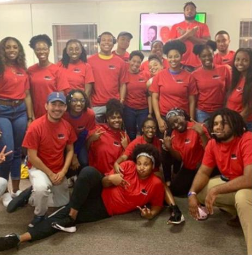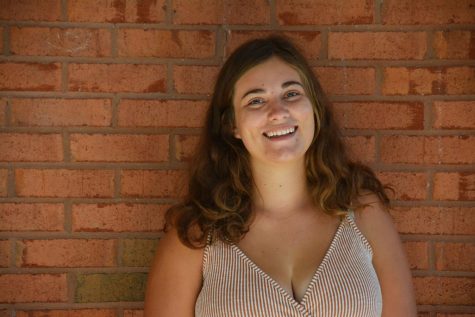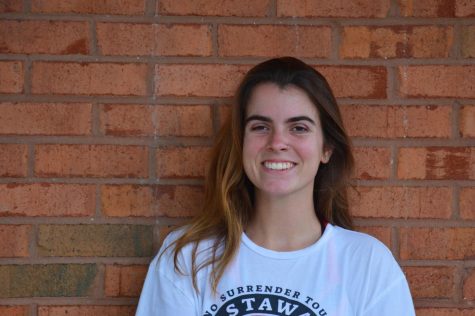A Shadow Cast By Rascism
DeLand erases its dark history with the rosy glow of nostalgia. Here’s our effort to dismantle that.
December 7, 2019
DeLand has presented itself as a deeply nostalgic city to tourists and locals alike. Americana murals that are painted across downtown present a rose tinted view of the town’s history, but according to history professor Andy Eisen, Ph.D., “Nostalgia is dangerous.” Looking at history through the lens of nostalgia is damaging because it erases violence. DeLand is like any other Southern town: it has a complicated history with race. In some ways, resistance to white violence is deeply integrated into our history, but the message is not often shown. In our local history, the Ku Klux Klan had influence in Volusia County during the 1920s, and DeLand was the center of many rallies and marches. Five lynchings have happened in Volusia County, one of which is not far from Woodland Blvd. Stetson also has allowed for white supremacy in the past such as the 1959 minstrel show acted out by Stetson professors in Elizabeth Hall, just years within integration of black students.
I spoke with Irene Laws (‘20), president of the Black Student Association who speaks on behalf of her three years of acquired knowledge and experience in DeLand and at Stetson.
Have any aspects of Stetson and/or DeLand’s history made you feel alienated as a student?
“Yes, Stetson’s history of having the KKK on campus is obviously a little off putting to hear about. Stetson as an institution has still failed to implement all of the original 12 demands submitted by the [Stetson African American Society], S.A.A.S., and the four that they claim to have fulfilled are lackluster or filled at the bare minimum. I’m referring to requests like the Africana Studies [program] which is only a minor, [is] poorly funded, and has only a small amount of faculty who are black. I am also referring to having the Cross Cultural Center which we only recently were moved into a renovated space due to there being rats in the old space, it took months to get out of there, and the new space cannot accommodate many [Multicultural Student Council] (MSC) organization sizes like BSA and [Caribbean Student Association] (CSA).
Stetson is known for being one of the first schools to be integrated in Florida, but as many today know diversity isn’t as big as a hurdle as it once was, the problem is inclusion. Historically and statistically Stetson does not have the best retention rates for students of color nor do they have the best track record when it comes to tuition. What is most alienating is seeing people who look like me, struggle like me, and work hard to be here leave because they don’t feel like they belong or that they run out of money to be here. Knowing that DeLand’s history is built on the backs of slaves and black folk makes me sad because the murals in downtown do not showcase people of color and somewhat romanticize the [town’s] history. Knowing the extreme redlining that occurs in DeLand has truly made me sad.”
I love that Stetson gives back to the community, especially Spring Hill, however the fact that Spring Hill isn’t even technically a part of DeLand makes me infuriated. BSA has always volunteered with the kids at Spring Hill. For the most part we are among some of the people they can actually relate to because they look up to us as role models for them in their predominantly black and Hispanic lower class community. Their isolation and lack of support by the city means that they are not apart of the city sewage system, they are in a food dessert, and much more and I know that if they become integrated many would lose their homes as property tax would sky rocket but there has been no alternative solution.”
How do you feel about Stetson’s efforts to make the campus inclusive and diverse?
“Stetson has always shown progress, but they are very, very, very, very slow at it. When we think of dining, Stetson will happily make adjustments for vegan and G8 options, which is limited but still present. However they fail to make accommodations that are Kosher and food available for Muslim students. There are less than 12 full-time faculty of color.. Sure, they have added some new hires in director positions and even associate directors, but proportionately these faculty and staff members are not found evenly throughout the business or music school. If you break it down to departments, the numbers are even more disproportionate. I’m not just talking about race, I’m talking about gender, ability, age, etc.
As far as efforts go everything has remained relatively the same since implementing a campus climate survey a few years ago, having the Equity and Inclusion group, and including report it resources such as the BEST reports. These all can measure the climate and status but do not prevent or stop the incidents of bias, discrimination, and anguish students, faculty, and staff face. The newest effort has probably been the addition of the Woke Independent Student Empowerment (WISE) program, this being the second year, the program has doubled. This sounds great but unfortunately with only two full-time staff to manage more than 40 students it seems like an uphill battle from the start. Ask yourself: is it enough to have the inclusive program without successfully integrating and including enough staff that are well trained and able to handle the workload of managing a whole department (Office of Diversity and Inclusion), oversee MSC, oversee 8 club organizations, manage the WISE program, look over bias related incidents, put on events, and so many more duties?
More than anything, often the job of diversity and inclusion falls on the backs of student based organizations, a few departments, but none of this is a campus initiative. The culture of the campus is simple: they don’t care enough. If only we put up decorations, posters, put on events like we do for Homecoming as we do for Hispanic Heritage month or Black History month but no, that is led by identity based cultural groups and a few related departments: it is not emphasized by the whole of the campus, schools, departments, and certainly not from the top (administrators).”
Is Stetson a good place to share the voices of minority students?
“Yes and no. In some spaces and places yes, but these are spaces that we ourselves have created not by Stetson itself. I could use the example of BSA’s Town Hall, but I must point out that it would not have happened had members of BSA not thought it necessary. Instead of Stetson University, Stetson administrators, student leadership organizations like SGA, and other aspects like them creating their own open forums for us, we have to do it for them. To get them nervous, uncomfortable, to listen and to bring them to our table instead of them inviting us to theirs. Stetson could easily be a place to share voices, but the question is who is willing to listen [and] not get defensive, dismiss, or put [it] on the back burner. It’s not enough to voice our issues and concerns through resources like the radio or even in a club meeting anymore… not if we want anything done. We need someone to pick up the mantel and say ‘I saw that,’ and ‘I heard what you said,’ and “this is what we can do.’”










karen ryder • Sep 25, 2022 at 12:19 pm
Black people ARE represented in the painter’s pond wall mural and the narrative booklet describes how the city was built on the backs of these faceless workers.